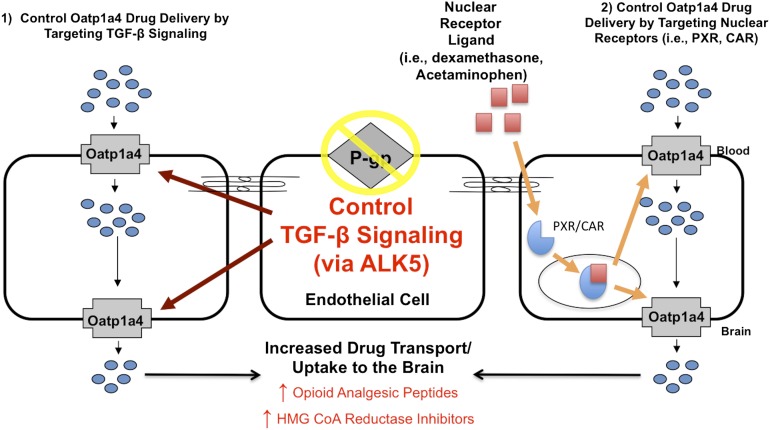Fig. 5.
Opportunities for targeting OATP/Oatp isoforms to optimize CNS drug delivery. Results from our recent studies demonstrate that targeting Oatp transporters during pathophysiological stress can modify CNS drug delivery. Oatp1a4 facilitates brain delivery of drugs that may exhibit efficacy in treatment of peripheral inflammatory pain or cerebral hypoxia, such as statins and opioid peptide analgesics. The TGF-β signaling pathway enables control of Oatp isoforms by targeting TGF-β receptors (i.e., ALK5) with small-molecule therapeutics such as SB431542. Additionally, nuclear receptors (e.g., PXR, CAR) offer another potential opportunity to control Oatp-mediated drug delivery by the use of a small-molecule therapeutic such as dexamethasone or acetaminophen. In this scenario, a PXR or CAR ligand binds to the nuclear receptor in the cytoplasm, triggers movement of the nuclear receptor–ligand complex to the nucleus, and thereby increases Oatp expression by enhancing transcription of an Slco gene. Although P-gp is also a critical determinant of CNS drug delivery, caution must be exercised when targeting this transporter to enable greater uptake of therapeutic agents into brain parenchyma. This warning arises from evidence obtained from several laboratories, including our own, that has shown that enhanced brain delivery of drugs can lead to CNS toxicity and unexpected adverse drug reactions.

